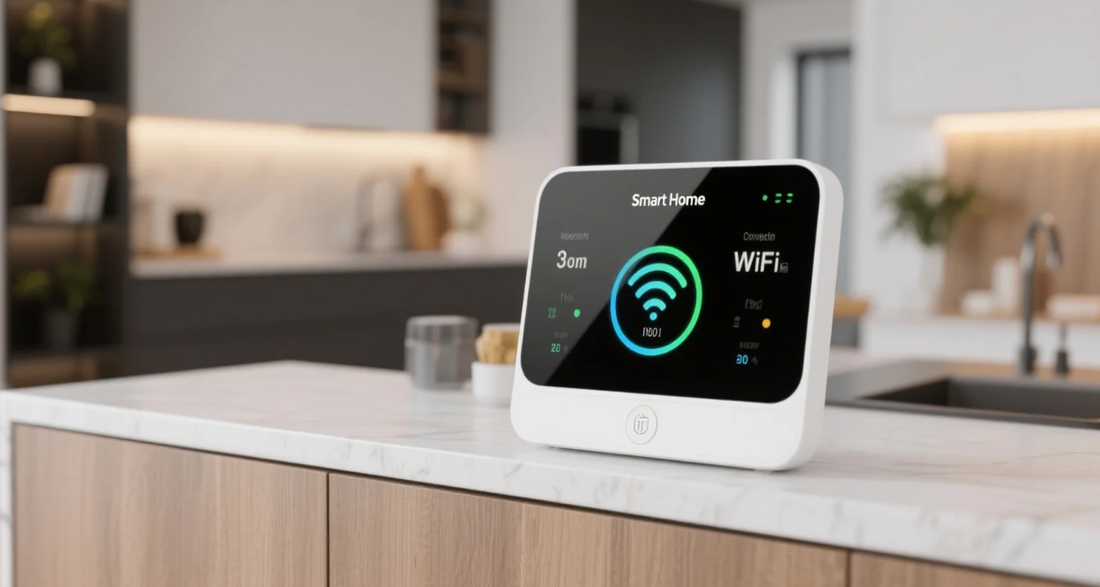
2025 Smart Home WiFi Energy Monitor: Top Ways to Save Power
Share
In today’s connected world, homeowners are increasingly seeking solutions to track and reduce their energy consumption. Within the first 100 words, we introduce the core topic naturally: a smart home WiFi energy monitor offers real-time insights into your power usage, enabling smarter decisions and significant savings. This article delves deep into how these devices work, their key benefits, and practical applications in the smart home ecosystem.
1. What Is a Smart Home WiFi Energy Monitor?

A smart home WiFi energy monitor is a device designed to measure and report electricity usage in real time via your home network. Once installed at your circuit panel, it collects data continuously and transmits it through WiFi to a dedicated app or cloud dashboard. Users can then view consumption patterns, set usage goals, and receive detailed analytics.
2. Key Features and Benefits
2.1 Real-Time Monitoring
One of the primary advantages of a smart home WiFi energy monitor is its ability to deliver real-time monitoring. Homeowners can instantly see which circuits or devices are consuming the most power. Consequently, adjustments can be made promptly to avoid waste.
2.2 Mobile App Integration
Furthermore, these monitors integrate seamlessly with mobile applications. By using push notifications, you’ll be alerted to unusual spikes in usage. Meanwhile, you can review historical data trends on your smartphone, allowing you to identify patterns and opportunities for savings.
2.3 Custom Alerts and Reports
Additionally, custom alerts and detailed reports help maintain energy efficiency over time. Reports can be scheduled weekly or monthly, making long-term energy management straightforward and effective.
3. How It Works: Behind the Technology

At its core, a smart home WiFi energy monitor uses current transformers (CT clamps) attached to your home’s main wires. These sensors detect the flow of electricity and send voltage and current data to the monitor’s microcontroller. Data is then processed and sent wirelessly via your router to cloud servers, which aggregate and display the results in user-friendly dashboards.
4. Installation and Setup Guide
Power Off: Ensure the main power is switched off to avoid hazards.
Attach CT Clamps: Secure the clamps around the live and neutral wires.
Connect Monitor: Mount the monitor unit in the panel and connect it to WiFi.
App Configuration: Download the companion app, register your device, and customize settings.
Tip: Always consult a licensed electrician if you’re uncomfortable working inside an electrical panel.
5. Use Cases in Smart Homes
5.1 Optimizing HVAC Systems
Smart thermostats can be paired with a smart home WiFi energy monitor to ensure HVAC units run only when needed. For example, when away from home, the system can reduce heating or cooling, while alerts notify you when filters need replacement.
5.2 Managing Home Appliances
Many appliances, such as refrigerators and washing machines, have high standby power usage. By reviewing detailed consumption reports, you can identify which devices should be unplugged or replaced.
5.3 Integrating with Smart Assistants
Moreover, integration with voice assistants like Amazon Alexa or Google Assistant allows hands-free control. You might ask, “Alexa, what’s my current energy usage?” and receive instant feedback.
6. Marketing Spotlight: EdgeAnt White-Label Solutions
EdgeAnt provides scalable, white-label smart home WiFi energy monitor platforms tailored to service providers and OEMs. Their turnkey solution includes app customization, cloud analytics, and dedicated support. EdgeAnt’s plug-and-play modules enable rapid deployment, letting companies offer premium energy monitoring services under their own brand. Looking for a reliable partner? Visit EdgeAnt for more details.
7. Choosing the Right Model
When evaluating models, consider:
Number of Circuits Supported: Single vs. multi-phase panels.
Data Resolution: Seconds vs. minutes.
Compatibility: Integration with existing smart home ecosystems.
Security: Encrypted data transmission and regular firmware updates.
8. Maintenance and Best Practices
To ensure longevity and accuracy, perform annual checks on CT clamps and firmware updates. Furthermore, regularly review alert logs and refine thresholds as consumption patterns evolve.
9. Frequently Asked Questions (FAQ)
Q1: Is installation DIY-friendly?
A1: Basic do-it-yourself installation is possible, but professional help is recommended for safety.
Q2: Can I share data with energy providers?
A2: Yes, many monitors offer API access or CSV export to send usage data to third parties.
Q3: Will the monitor increase my electricity bill?
A3: No, the device consumes minimal power (under 1W) and often pays for itself via savings.
Q4: Are there privacy concerns?
A4: Ensure the vendor uses end-to-end encryption and robust data privacy policies.
Q5: How soon can I see savings?
A5: Most users notice measurable reductions within 1-2 billing cycles by making targeted adjustments.
Conclusion
By integrating a smart home WiFi energy monitor into your connected home, you gain valuable insights, reduce waste, and uphold sustainable living practices. Ultimately, this small investment leads to both financial and environmental benefits, supporting a smarter future.